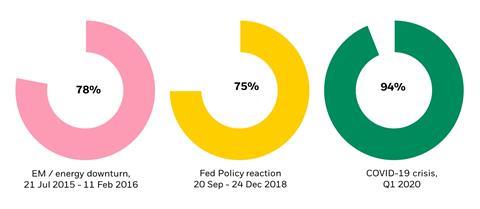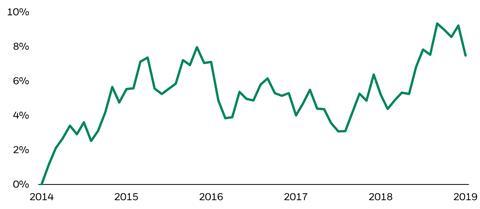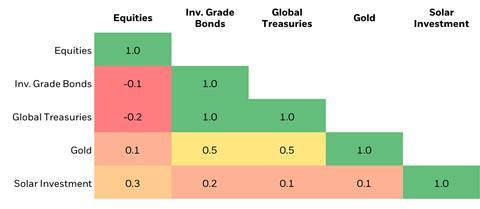Case study by BlackRock
- Signatory type: Investment manager
- Region of operation: Global
- Assets under management: US$7.3trn
Why consider ESG via multiple drivers of return
Today’s low-return environment requires investors to draw on multiple return sources to meet objectives and maximise the efficiency of a portfolio’s risk budget. We have established a framework for blending index, factor and alpha-seeking strategies. Each of these building blocks has its own characteristics, and therefore complement one another in a well-constructed portfolio.
We are also seeing a rising focus on sustainability from governments, corporations, and individuals, leading to unprecedented growth in global demand for sustainable investment solutions: global sustainable open-ended funds attracted US$69bn in new assets in the second quarter of 2020, setting new records in sustainable flows. Changes in regulations and consumer preferences are likely to continue to unfold over multiple years or decades, having implications for expected returns, as we argue in a previous publication. We expect ESG will affect all drivers of return and we use our framework of index, factor and alpha to incorporate ESG through those different lenses.
How ESG can be expressed through index, factor and alpha exposures
Indexes
We use indexes in portfolio construction to access broad market exposures in a cost-efficient manner. We can realise those benefits and simultaneously increase resilience by incorporating ESG considerations, such as by refining indexes to eliminate certain companies or sectors associated with negative ESG characteristics, or by tilting towards higher ESG scores. The potential for improved resilience was displayed in the first quarter of 2020, where our research showed that >90% of a globally representative selection of widely analysed sustainable indices outperformed their parent benchmarks. Figure 1 shows that this has also held true in other recent downturns.
Figure 1: Percentage of sustainable indices that have outperformed during downturns

Source: BlackRock, May 2020. For illustrative purposes only. Analysis based on a set of 32 globally-representative, widely analysed sustainable indices and their non-sustainable counterparts.
Factors
We also incorporate ESG data into factor definitions, such as by using machine learning techniques to quantify corporate culture as part of our quality measures. In another instance, we measure green intangible value. This is increasingly important for companies but not typically captured in financial statements as traditional physical assets are. We look for patents filed under fields corresponding to the UN Sustainable Development Goals and use this information alongside more traditional measures like earnings yield to enhance the way we capture the value factor, as illustrated in Figure 2.
Figure 2: Cumulative excess return of intangible green value vs. traditional value strategy

Source: BlackRock Factors-Based Strategy Group research, September 2019. Chart shows cumulative excess return over 5 years.
Alpha
Alpha is about seeking idiosyncratic returns that are independent of both index and factor exposures. This typically involves targeting unique and harder to access insights – including those related to ESG. To incorporate ESG data into our search for alpha, we have used large sets of climate data from sources such as NASA and FEMA to geolocate natural disasters and identify investment opportunities. We also believe thematic investments such as renewable energy can be additive to a portfolio’s risk-adjusted returns given their low correlation to traditional assets and other common diversifiers such as treasuries and gold. We are further able to diversify renewable energy exposures across regions and technologies.
Figure 3 - Correlation of renewable energy investments to other assets

Source: BlackRock, Bloomberg, September 2020. Correlations calculated based on daily returns in GBP terms for the 2-year period ended September 2020. Solar energy investment represented by current holding within BlackRock’s ESG Multi-Asset Fund; global stocks represented by the MSCI World Index; global investment grade bonds represented by the BBG/Barclays Global Aggregate Index; global treasuries represented by BBG/Barclays Global Treasuries Index.
Disclaimer
All charts are for illustrative purposes only. This is not a recommendation by BlackRock to adopt any particular investment strategy. Indexes are unmanaged and used for illustrative purposes only and are not intended to be indicative of any fund’s performance. It is not possible to invest directly in an index. Past performance is not indicative of future results. Case studies are edited by the PRI for clarity and consistency.












